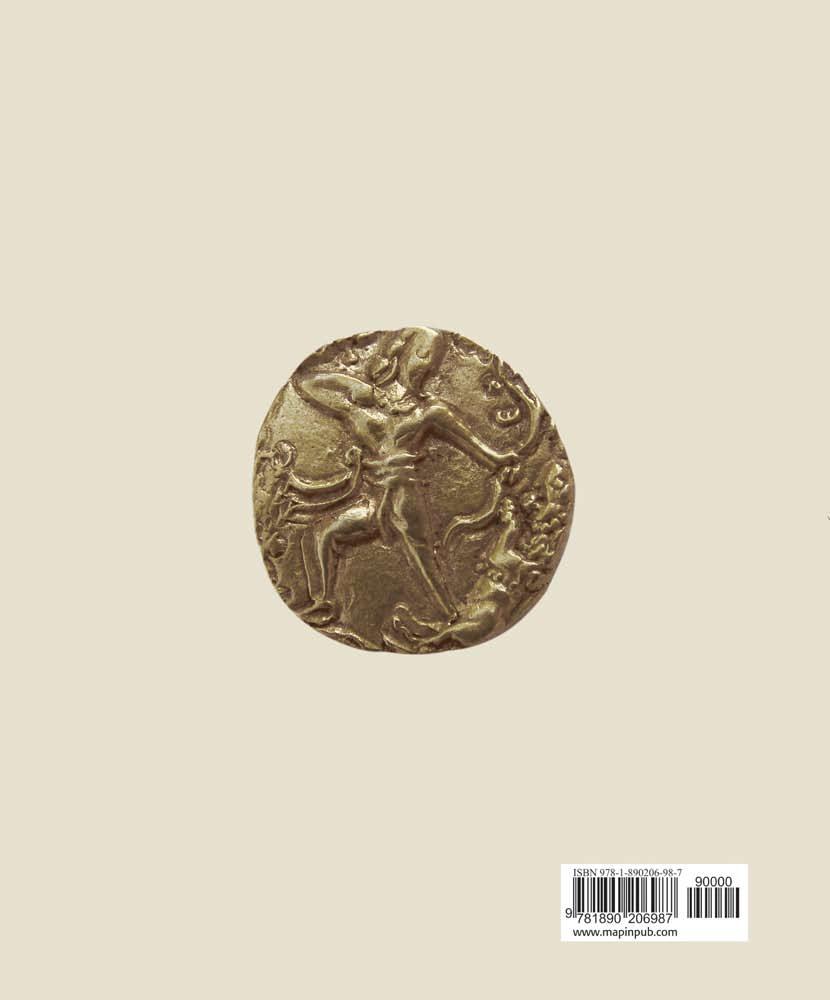






EDITED BY CHANDRAMANI SINGH

JAWAHAR KALA KENDRA and DEPARTMENT OF ARCHAEOLOGY AND MUSEUMS, RAJASTHAN in association with MAPIN PUBLISHING
F i rst pu bl i sh e d i n I n d i a i n 2009 by M a pi n P u bl is h i ng i n a sso c i a t i on w i t h
J aw a h a r Ka l a K e n d r a , J a ipu r
S i mu l t a n e ou sl y pu bl is h e d i n t h e
Un it e d S t at e s of A m e r i c a i n 2009 by
Gr a n t h a Cor p or a t i on
77 D a n i e l e D r ive , H i dde n M e a dow s
O ce a n Tow n sh ip , N J 07712
E : mapinpub@aol.com
Distr ibuted in North Amer ica by Antique Collectors’ Club
East Works, 116 Pleasant Street, Suite 18 Easthampton, MA 01027
T: 1 800 252 5231 • F: 413 529 0862
E: info@antiquecc.com www.antiquecollectorsclub.com
Distr ibuted in the United Kingdom and Europe by Marston Book Ser vices Ltd.
160 Milton Park, Abingdon Oxon OX14 4YN UK
T: 44 (0) 1235 465500 • F: 44 (0) 1235 465555
E: direct.orders@marston.co.uk www.marston.co.uk
Distr ibuted in the Middle East by Avicenna Partnership Ltd P O Box 484
Oxford, OX2 9WQ UK
F: 44 (0) 1387 247375
E: claire_degr uc hy@yahoo.co.uk
Distr ibuted in Australia and New Zealand by Per ibo Pty Ltd
58 Beaumont Road
Mount Kur in-Gai NSW 2080, Australia
T: (61) 02 9457 0011 • F: 02 9547 0022
E: mic hael.coffey@per ibo.com.au
Distr ibuted in Southeast Asia by Paragon Asia Co Ltd. 687 Taksin Road, Bukkalo, Thonbur i Bangkok 10600 Thailand
T: 66 2877 7755 • F: 2468 9636 E: info@paragonasia.com
Distr ibuted in the rest of the world by Mapin Publishing Pvt Ltd.
502 Par itosh, Near Dar pana Academy of Performing Arts
Usmanpura Riverside, Ahmedabad 380013 INDIA
T: 91 79 402 28 228 • F: 91 79 402 28 201
E: mapin@mapinpub.com www.mapinpub.com
Text © Jawahar Kala Kendra, Jaipur Photographs © Department of Arc haeology and Museums, Government of Rajasthan; except on page 207 (below) © Prachina
This edition copyr ighted by Mapin Publishing
All rights reserved under international copyright conventions No part of this book may be reproduced or transmitted in any form or by any means, electronic or mechanical, including photocopy, recording or any other information storage and retrieval system, without prior permission in writing from the publisher
ISBN: 978-81-89995-22-5 (Mapin) (hc)
ISBN: 978-0-944142-64-6 (Grantha) (hc)
LCCN: 2008908793 (hc)
ISBN: 978-81-89995-23-2 (Mapin) (pb)
ISBN: 978-1-890206-98-7 (Grantha) (pb)
LCCN: 2008937595 (pb)
Design: Jalp Lakhia / Mapin Design Studio Production: Gopal Limbad / Mapin Design Studio Copyediting: Vinutha Mallya / Mapin Editor ial
Proofreading: Sarah D’Souza; Support: Avani Tanya Pr inted in Singapore
The paper used in this publication meets the minimum requirements of the Amer ican National Standards for Permanence of Paper for Pr inted Library Mater ials
Page 1
Hair pin, ivory, Jaipur, 20th century, 3.8 x 2.6 cm
Museum at Raj Bhavan, Mt Abu, Acc No 4338
A delicately car ved ivory hair pin with grooves and a full figure of a lion at the apex It is part of the Sirohi museum collection, but or iginally from Jaipur Ivory items have been popular among the elite for centur ies
Pages 2–3
Id Procession of Akbar II, watercolour on paper, Delhi, 19th century, 261.6 x 12.7 cm
City Palace Museum, Alwar, Acc No 593/1012
The long scroll painting shows Mughal Emperor Akbar II (r 1806–1837) on an elephant, accompanied by regalia and paraphernalia Though a nominal ruler, he was held in esteem by the people of Delhi
Pages 10–11
Taus veena,wood, Alwar, 20th century
City Palace Museum, Alwar
A beautiful painted and wooden musical instr ument, in the shape of a peacoc k.
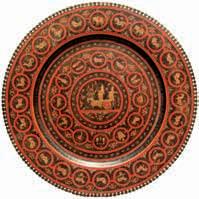
PREFACE 10 INTRODUCTION 12


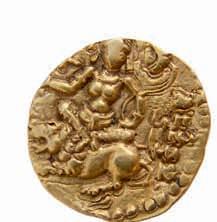






GANGA GOLDEN JUBILEE MUSEUM BIKANER






CITY PALACE MUSEUM ALWAR






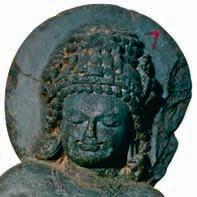
RAJMATA DEVENDRA
MUSEUM

SAWAI MAN SINGH TOWN HALL MUSEUM







ALBERT HALL MUSEUM
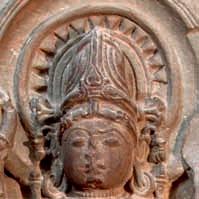














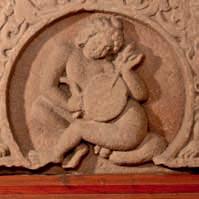
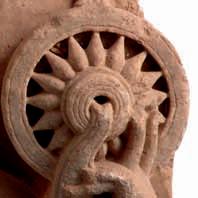

RAJKUMAR HARDAYAL SINGH MUSEUM






SIKAR 176 SITE MUSEUM AT AHAR UDAIPUR 182






GOVERNMENT MUSEUM UDAIPUR
186
APPENDIX 202
Details of Featured Museums
Other Museums of Interest
CREDITS 208
It gives me great pleasure to announce this spectacular publication, which lends a glimpse into the valuable collections of the government-managed museums of Rajasthan.
Museum activity in Rajasthan dates back to the late 19th century, when princely states established recreational and educational public spaces such as museums and parks. The Jaipur State led the movement in 1887, when the Albert Hall Museum was built in Ram Niwas Bagh. In Udaipur State, the Victoria Hall Museum was opened for public in 1890. The beginning of 20th century witnessed the birth of many museums—Rajputana Museum, Ajmer (1908), Sardar Museum, Jodhpur (1909), Jhalawar (1916), Bikaner (1937), Amber (1938), Alwar (1940), and Kota and Bharatpur (1944).
After India’s independence in 1947, when the state of Rajasthan was formed, the archaeological departments and museums of the erstwhile princely states of Rajputana were integrated under the Department of Archaeology and Museums. Over a period of 60 years since, many new museums have been established—Dungarpur (1959), Ahar (1961), Mount Abu (1965), Mandor (1968), Chittorgarh (1969), Pali (1991) and Sikar (2006). A museum at the Sawai Man Singh Town Hall in Jaipur is in the process of being set up.
The growth of museums has, for long, demanded the need for a publication that encapsulates the highlights of their collections. Catalogues and booklets on the collections of Bharatpur, Jodhpur, Ajmer, Bikaner, Kota and Udaipur museums, which were prepared by the respective curators, were printed by Vakil & Sons, Bombay, in 1961. But, in the last 60 years, the collections of these old



museums have been enriched substantially. As new museums came up, except for small brochures and leaflets, no comprehensive catalogue has been published until now. The documentation of art forms and art collections has been a major activity of Jawahar Kala Kendra, since its inception in 1993. Several publications documenting performing arts, monuments and heritage properties that are owned and managed by the Rajasthan state government, and of private collections, have been produced. This volume records the art treasures preserved in selected government museums in the Rajasthan state.
The documentation project was initiated in 2007, as part of the “Subject of the Year” programme of Jawahar Kala Kendra. The book is a joint effort between the Kendra and the Department of Archaeology and Museums, Government of Rajasthan, which has funded this project. The task of putting together this publication was a Herculean effort, one which the documentation division of the Kendra readily accepted. The result is a well presented book that is now in your hand. The Kendra is grateful to all the specialists who were called upon to contribute valuable notes and insights on the objects in the museum collections. The officers in charge of every museum featured in the book deserve credit for their efforts in helping put it together.
I am sure the book will be met with great interest and enthusiasm by scholars, students and art connoisseurs.

ASHA SINGH, IAS Director General, Jawahar Kala Kendra July 2009, Jaipur


ollecting beautiful objects is a natural human instinct and this has been the main motive for all man-made collections. The earliest collections were put together by individuals and families. Priests and caretakers of holy places compiled gifts given to places of worship by ardent devotees. These collections were sometimes selectively opened up for viewing, to gain admiration and respect. Kings and emperors displayed their war booty to the citizens, as a sign of their courage and bravery. Teachers and guides also gathered specimen of objects to aid the learning process of their students. In many cases, such collections have grown enormously over the centuries.
To make an object available for public viewing and to serve an educational purpose was an idea that gained importance in the later half of 19th century. Historical turning points of the 19th century such as the expansion of British Empire and the Industrial Revolution in Europe, spurred a quest for knowledge and learning. These factors inspired the museum movement. Today, exhibited objects are not only examples of our visual culture, but they are also an important resource in the study of history.
India, having earned the sobriquet of “Jewel of the British Empire”, received great attention from the British government. The entire country was surveyed by trained personnel and reports from these surveys were published. The Survey of India plotted the entire country, and prepared modern scientific maps. Offices of Botanical, Zoological, Archaeological and Geological surveys were also established.
At the same time as when the surveys were taking place, collections of objects and artefacts were also put together, and they were shown in Britain and other European countries. Industrial exhibitions were organised simultaneously, in which many Indian objects were exhibited. These included handmade articles in wood, metal and clay,
and colourful textiles. The main purpose of such exhibitions was to display the grandeur of the British Empire, but it served other objectives too: scholars, connoisseurs and craftsmen studied them and learnt techniques of the art. They also studied myths and mythological figures depicted in the artwork, leading to a meaningful understanding of India, its culture and its people. India and Indian art won recognition in Western countries, which resulted in a change of perception. The country of snake charmers suddenly came to be known as a place of artistic creations.
The princely states of Rajputana province, now collectively forming the state of Rajasthan, started participating in European and Indian industrial exhibitions of 19th century. These states were immensely rich in antiquarian wealth, where rulers had been patronising crafts for centuries. The princes of such kingdoms, most of whom were educated in Britain, had adapted a modern lifestyle and were well aware of the museum movement in Europe. They were inspired by the museums and princely collections that they had seen during their travels abroad, and were collecting masterpieces and bringing them to India from Europe. When the idea of starting a museum for their own state came up, almost all of them happily agreed. This was also welcomed across the Rajputana kingdoms because all major princely states had enough resources to start such museums.
The collections came from three different sources: the objects found at survey and excavation sites, mainly sculptures, architectural fragments, coins and epigraphs; the decorative art and artefacts used in everyday life, such as ornaments, toys, furniture, utensils, crockery, cutlery and textiles; and gifts given from institutions and by visiting dignitaries.
The surveys by Sir Alexander Cunningham, after his appointment as Director General of Archaeological Survey of India in 1862, until his retirement in 1884, covered the entire country, and marked important archaeological and historical sites and statues. His reports were published in 23 volumes. The volume numbers 6, 20 and 23 mention
specifically about the antiquities and places of antiquarian interest in Rajputana. Scientific excavations started fairly late in Rajasthan—in the 1930s—with the setting up of the Archaeology Department in Jaipur State and the appointment of Rai Bahadur Dayaram Sahni as its director. However, exploration had already started in Bikaner, in western Rajasthan, by Dr Luigi Pio Tessitori, an Italian scholar who came at the invitation of Maharaja Ganga Singh of Bikaner (r. 1887–1943). A Swedish mission that visited under the leadership of Hana Rydh made tremendous contribution around this time. The excavated and explored material was properly stored, studied and published.
There were other individuals who contributed towards the museum movement in Rajasthan. In the princely state of Mewar, in late 19th century, when Kaviraja Shyamaldas was writing the history of the Mewar State, Veer Vinod, his assistant Dr Gaurishankar Hirachand Ojha proved to be a great enthusiast, who also collected many sculptures and epigraphs from the Mewar region. These pieces were accumulated in the Palace Complex and later became the nucleus of Victoria Hall Museum at Udaipur. Dr Ojha went on to become the founder–curator of two important museums of Rajasthan—at Udaipur and Ajmer. The history department of Jodhpur State was headed by Munshi Devi Prasad. Young Bisheshwar Nath Reu was his assistant, who later became an eminent historian and a pioneer in the field of museology. He founded and curated the Sardar Government Museum and the Sumer Public Library in Jodhpur.
The decorative art objects that form an important part of most princely collections were procured by curators through purchase at national and international fairs and exhibitions. The well-documented catalogue by T H Hendley at Albert Hall, for example, mentions that the jewellery collection of the museum, comprising ornaments worn by local peasant women, was bought by his assistant Braj Ballabh from local village fairs.
Traditional craftsmen who were customarily patronized by the royal families also produced some excellent items of decorative art. They
included carpenters, blacksmiths, shoemakers and jewellers who fulfilled day-to-day requirements of wealthy families. Some of them excelled in their craft and came to be known even outside their own state. Jaipur had many such artists and craftsmen, whose works are exhibited in Albert Hall Museum in Jaipur and even in the Victoria and Albert Museum, London.
PHASE I: 1887–1949
The princely Jaipur State took lead in establishing a museum in its capital during the reign of Maharaja Sawai Ram Singh II (r. 1835–1880), with the setting up of a temporary space for curios, ajaib ghar, a museum. The building, which is now the Rajasthan School of Art, was opened for public view on 21 August 1881. Later on, artefacts and objects which were made for the Jaipur Exhibition of 1883, were also displayed in this museum along with the curios. The artefacts were primarily of educational importance, representing the industrial arts of the time. This collection was later moved to the newly constructed Albert Hall building in Ram Niwas Bagh in September 1886, during the reign of Maharaja Sawai Madho Singh II (r. 1880–1922).
A salver made by artist Raghunath of Jaipur is a superb piece, which is displayed in the Jaipur museum. A beautifully carved door from Kapurthala, attractive carpets woven at state jails, and samples of printed fabric commissioned from printers in Agra, Karauli and Sanganer, purchased at an exhibition, can also be viewed in Albert Hall, Jaipur. A carpet from Hyderabad was gifted to the museum by the Nizam of Hyderbad when he visited Albert Hall in the late 19th century. The Maharana of Udaipur had presented an ivory elephant with a royal howdah. These objects are great examples of 19th century industrial arts. The conscientious efforts of Thomas Holbein Hendley, a surgeon in Indian Medical Services, who was the first honorary secretary of the museum, made it an ideal industrial arts museum. It remains one of the best 19th-century museums to this day.
Fragmentary inscription, black stone, Kharwa, 9th–10th century, 25.2 x 19.3 cm Rajputana Museum, Ajmer, Acc No 492
The upper part of this fragmentary inscription unearthed at Kharwa in Ajmer has decorative motifs. The inscription in the lower part, written in Nagari script, is illegible.


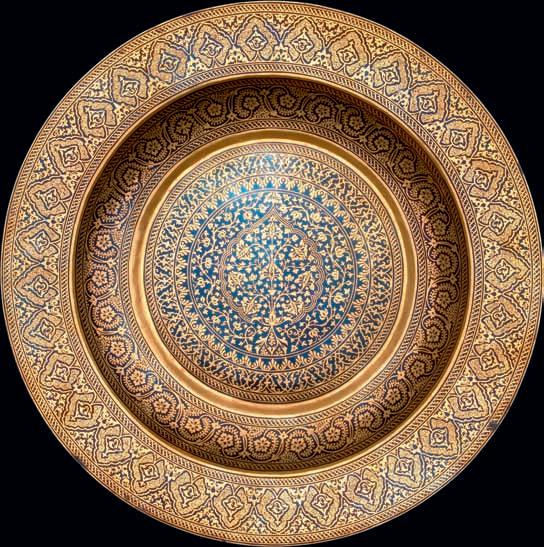
Facing page
Plaque, brass, Jaipur, late-19th century, 42 x 32.5 cm
Albert Hall, Jaipur, Acc No 2128
The scene engraved is executed with repoussé and depicts a tale from the Ramayana—the burning of Lanka by Hanuman with his tail, making the demons of the city flee in terror. The plaque was crafted by Raghunath, the 19th-century artist of Jaipur. It is based on a 16th-century painting by Basawan and Miskin, which was commissioned by Emperor Akbar (r. 1556–1605).
Above
Ornamental plate, metal, Jodhpur, 19th century, 36 cm (D) Sardar Museum, Jodhpur, Acc No 29/161
The plate is ornamented profusely with colourful geometric designs that are intricately carved.
Hayagr iva, watercolour on paper, Malwa style, provenance not known, mid-17th century, 14 x 14 cm
Ganga Museum, Bikaner, Acc No 1898 BM
The painting shows the horse-faced Hayagr iva revealing himself from the agni kund, fire pit, holding his attr ibutes To his r ight is a demon with khanda, sword, and to his left is Brahma with his four adopted sons—Sanatkumar, Sanatan, Sanak and Sanandan According to legend, Lord Vishnu took this incarnated form to take bac k the Vedas, stolen by the demons Madhu and Kaitabh.

In 1899, when Lord Curzon was appointed gover nor general of India, his interest in monuments and museums gave a fresh impetus to these efforts. He revived the post of director general of the Arc haeological Sur vey of India with the appointment of Sir John Marshall, in 1902 His keen interest in the subject resulted in expansion of the sur veys and sc hemes under whic h, for the first time, Indian talent was recr uited.
Facing page
Thakur Shivnath Singh of Kuc haman Thikana, watercolour on paper, Jodhpur, 19th century, 27.9 x 20.9 cm
Sardar Museum, Jodhpur, Acc No 420
Presumably, the c hief of the Kuc haman Thikana is out for a visit as he is fully dressed. The gait of the men in the retinue supports this Also, the horse is shown dec ked with ornaments, and there is no sign of battle
Mewar, whic h had r ic h arc haeological mater ial, took the decision to set up a museum in Udaipur dur ing the reign of Maharana Fateh Singh (r. 1885–1930), to coincide with the celebrations of Queen Victor ia’s silver jubilee A public library was also attac hed to the museum, and Dr G H Ojha took c harge of these institutions In the beginning of the 20th century, Dr Ojha, an eminent histor ian, was invited to set up the Rajputana Museum at Akbar’s histor ic fort in Ajmer. This museum, situated in the 16th-century Mughal str ucture, has a r ic h collection of excavated mater ial and objects of antiquar ian interest, whic h were gathered by Dr Ojha and his successor U C Bhattac harya, and the artefacts collected by Dr D R Bhandarkar



Choga (and detail), long coat, velvet, Bikaner, early-20th century, 132 cm (L) Ganga Museum, Bikaner, Acc No 582 BM
Embroidered with kalabattu, metallic thread, this upper-body garment was worn by men as part of formal clothing, in court or on important occasions, in the 19th and early-20th centuries. The choga was often patterned on a loom or embellished with rich embroidery to give it the regal look. Detail shows intricate embroidery of tiny leaf motifs arranged between diagonal stripes and flowers, set beside the form of a paan, betel leaf.
Like in Mewar, historians in Marwar were responsible for setting up the Sardar Museum in Jodhpur in 1914. It has a rich collection of antiquities, like sculptures, coins, inscriptions, specimens of local arts and crafts, and educational apparatus. Pandit Bisheshwar Nath Reu, the historian who curated the museum, published the Annual Report on the Administration of Archaeological Department and Sumer Public Library, Jodhpur in 1924, which continued until he retired in 1948. He also produced a series of booklets on illustrated manuscripts of paintings done in Jodhpur style that were executed mostly in the reign of Maharaja Man Singh (r. 1803–1843).
Marwar’s neighbouring state of Bikaner, ruled by the Rathores, invited an Italian scholar, Dr Luigi Pio Tessitori, to conduct a survey of historical




and bardic material in 1916. He discovered and collected very rich antiquarian remains and also noticed the proto-historic importance of northern Rajasthan—Ganganagar and Bikaner regions—which subsequently led to the discovery of Kalibangan, a metropolitan town of Indus Valley civilisation. He salvaged terracotta of the Gupta period (4th–5th century AD) from the mounds of Rangamahal, Badopal, Pir Sultan Ri Theri and Munda, which now adorn the Government Museum in Bikaner.
The unparalleled heritage of Hadauti region, which comprises Bundi, Kota and Jhalawar, was housed in the region’s first museum established in 1915 at Jhalawar near the palace, under the patronage of Maharaja Bhawani Singh (1899–1929), whose great interest in both, visual as well as performing arts, was well known. Gopal Lal Vyas, the state pundit, chief scholar, was authorised to conduct surveys and collect objects of antiquarian interest like epigraphs and sculptures, in addition to illustrated manuscripts and miniature paintings, which formed the nucleus of the museum.
Nearly two decades later, in February 1936, the History Department of the erstwhile princely state of Kota invited Dr A S Altekar, the eminent professor from Benaras Hindu University, to conduct an archaeological survey. He was assisted by the state historian, Dr Mathura Lal Sharma. The outcome was the discovery of a number of important historical sites with monumental remains of forts, and temples studded with old
Gold muhar, Kalima type, issued by Akbar, Lahore, 16th century, 12 gm Ganga Museum, Bikaner, Acc No 27 BM
The coin was issued by Mughal emperor Akbar (r. 1556–1605), minted in Lahore and acquired by the museum from the Bada Karkhana in Bikaner.
Obverse: Name of the four caliphs–Abu Bakr, Umar, Usman and Ali–in the four corners and the kalima, pious wish, in the centre.
Reverse: Name, Mint and Hijri year: “Khald Allah Talah Mulkah Jalaluddin Muhammad Akbar Badshah Ghazi Zarb Urdu Zafar Qrin, Lahore, AH 988” (AD 1580).
A chandrashala, sandstone, Bharatpur, 5th century Lohagarh Museum, Bharatpur, Acc No 63
Chandrashala is a motif of a divine or a human figure in a dormer window, serving as a decorative structural element in architecture. The figures are either cult icons, or attractive human faces. In this example, which is the left part of the dormer window, is a beautiful female face sculpted in pink sandstone. This chandrashala is decorated with floral motifs.








epigraphs. In his report submitted to the state government, Dr Altekar stressed on the need to establish a museum at Kota, to ensure the preservation of these relics. Dr Mathura Lal Sharma was entrusted to collect and salvage this splendid material, and preserve them in the Braj Vilas Gardens by the year 1944. He also documented the sources of this material in his celebrated work on the history of Kota State, Kota Rajya Ka Itihas, in two volumes, published in 1939.
The princely states in the eastern part of Rajasthan also witnessed establishment of museums in the 1940s. The zeal of Maharaja Brijendra Singh of Bharatpur led to the salvaging and acquisition of sculptures, architectural pieces, inscriptions and antiquities, which were later put on display in the local public library. The untiring efforts of Rawat Chaturbhuj Das Chaturvedi, the founder–curator, made the collection interesting, both in quantity and quality. He was able to enlarge the collection by adding manuscripts, paintings, stuffed hunted animals, and specimen of local arts and crafts from the royal house. The entire collection was transferred to the historic Lohagarh fort and gained
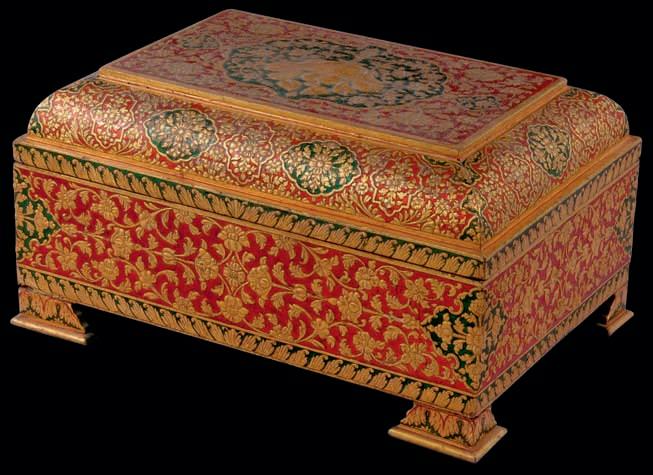
Perfume box, wood, Bikaner, early-20th century, 50 x 29.2 cm Ganga Museum, Bikaner, Acc No 94 BM
The box is ornamented with lacquered colours in munnawwat, a tec hnique special to Bikaner, by whic h, raised floral patterns are created on surfaces of objects with a mixture of clay and glue The surface of this box is covered with golden leaf designs and the remaining ground is filled with red and green colours





the stature of a full-fledged museum on 11 November 1944, when it was opened to public. After Independence, the sileh khana, armoury, and the kamra khas, visiting room, were also added to it in July 1951.




A jar handle, clay, Sambhar, 4th century, 9.4 x 12 cm Albert Hall, Jaipur, Acc No 35=65
The handle is in the shape of a woman’s torso. It was prepared in a separate mould and attached to the jar before firing. The fragment is an important discovery from Sambhar. Rai Bahadur Sahni, who found it during the archaeological excavations there, called it “Descent of the celestial River Ganga”.
Damtamacha Junabi, sword, steel, Alwar, 19th century, 87 cm City Palace Museum, Alwar, Acc No k5-6=kh-34
Made of sakela steel, the sword has a ribbed blade and a hilt with gold work. The records of Alwar royal armoury show the sword was made by Rahim.
Vinay Singh (r. 1814–1857), the king of the neighbouring state of Alwar, ruled by the Kachhawaha Rajput clan, took the opportunity of the disintegrating Mughal empire in Delhi to enrich Alwar’s art treasures. He was a great patron of art and architecture and built the grand City Palace in Alwar, the artistic cenotaphs of Bakhtawar Singh and Moosi Rani, and also the palaces at Siliser. His interest in art and music not only led him to acquire rare and valuable illustrated manuscripts, paintings, art objects, unique and historic arms and weapons, through purchase from Delhi and elsewhere, but also to patronize artists, painters, poets and musicians. His liberal patronage to local talent produced masterpieces in art and craft. The efforts of Major Harvey, the prime minister of Alwar, whose contribution towards the modern development of the state is well known, turned this entire collection into an excellent museum, which was opened to public in November 1940, on the fourth floor of the City Palace, where it remains until now.
Maharaja Man Singh II (1922–1970), the Kacchawaha ruler of Jaipur, established an archaeological department in Jaipur in 1935, which took lead in exploring and excavating old sites, and utilised the services of eminent archaeologists and scholars for the purpose.






Coat, brocade, Alwar, late-19th century, 66.6 x 47 cm City Palace Museum, Alwar, Acc No 5
This richly embroidered coat was worn by Maharaja Shivadan Singh (r. 1857–1874) and gifted to the museum by the royal family in 1937. The pattern shows British influence in its design.
India’s first director general of archaeology, Dr Daya Ram Sahni, the distinguished archaeologist who explored Harappa in 1921, was invited after his retirement by the Jaipur State, to revitalise its department in 1935. He put Jaipur on the archaeological map of India through the excavations of sites at Bairat, Sambhar and Rairh. These yielded rich antiquarian material in the form of sculptures, terracotta, metallic objects, coins and portable antiquities. This rare collection was housed by the archaeological department at Vidyadhar-Ka-Bagh in Purana Ghat of Jaipur, and turned into an archaeological museum in 1938 by Dr Sahni. This collection, along with excavations and discoveries made by his successors, was transferred to Dilaram Bagh in Amber in July 1949.
After the state of Rajasthan was formed upon Independence in 1947, the Department of Archaeology and Museums was established in April 1950, integrating the archaeological departments and museums of the many erstwhile princely states. The nine museums, located in Jaipur, Amber, Jodhpur, Bikaner, Udaipur, Alwar, Bharatpur, Kota and Jhalawar, came under this newly-born department. In November 1956, the Rajputana Museum in Ajmer was also added to this list.
Dr Satya Prakash (1948–1969), who headed the department in Jaipur State, was appointed the chief superintendent of this integrated unit. This post was upgraded in 1956 to that of Director. The eighth annual conference of the Museum Association of India, which was held in Jaipur on 29–30 December 1951, witnessed an inspiring lecture on the Use of Museums by Prof K-de-B-Codrington, Keeper (Indian Section) at Victoria and Albert Museum, London, which paved way for further development of museums in the new state.
In the new set-up, the museums of Rajasthan were given reasonable flexibility in their concept and scope. The archaeological or industrial arts bias was minimized, to the extent that these temples of muses could project and bring to focus the culture and tradition of Rajasthan in its entirety. Efforts were made to turn them into living institutions, attracting a cross-section of society—old and young, literate and
illiterate, scholars and tourists alike. These were no longer ajaib ghar, storehouses of oddities and curios, but were gradually turning into multi-purpose cultural organisations, meant to collect, preserve and exhibit vast cultural heritage, in which Rajasthan abounds.
In the late fifties and sixties, the state witnessed tremendous growth in museological activities. New museums were established at important historical and cultural centres like Dungarpur (1959), Ahar (1961), Mount Abu (1965), Mandor (1968), Chittorgarh (1969), Jaisalmer (1948), Pali (1991), Sikar (2006), and the Sawai Man Singh Town Hall Museum in Jaipur (underway).
The discoveries by R C Agrawala during 1958–62, of important postGupta sculptures belonging to the period between sixth and eighth centuries AD, from the Vagad–Mewar and Abu regions, revealed an independent western Indian art tradition flourishing in Gujarat and Rajasthan. Many lovely and artistic images made from locally available
Bullock cart, wood and clay, early-20th century, Pokharan village in Jodhpur, 24 x 27 cm Sardar Museum, Jodhpur, Acc No 179/1408
This model of a bullock cart is an outstanding example of clay craft of Marwar. It shows robust bullocks and the expressive face of the cart driver. The potter’s familiarity with the mechanism of the cart is seen in the intricate details. Pokharan village is a centre of terracotta craft, where the potters are highly innovative. The terracotta horses made by them as offerings to Ramdeoji, a local hero, are their prized creations.


pareva, greenish schist, were noticed and acquired for the government museums at Udaipur and Dungarpur. Rich sculptures were explored from sites like Amjhara, Tanesar, Navalshyam and Kalyanpur in Vagad region; Kejad and Sagat in Mewar; and Devangana in Abu. This material was salvaged and collected from 1959 onwards by the Department of Archaeology and Museums and installed in the campus of the Panchayat Samiti, the local government office, in Dungarpur. In the later half of the seventies, Maharawal Lakshman Singh and his brother Dr Nagendra Singh, princes of Dungarpur, gifted their entire personal collections of archaeological material, including fine sculptures and old inscriptions, to enrich the museum in Dungarpur.
The mounds at Ahar in Udaipur, Tambavati and Dhoolkot, were excavated scientifically by R C Agrawala with assistance from a team of young and enthusiastic officers, from 1954–1955 onwards. Largescale diggings were carried out in 1961–1962 by the department, in collaboration with Deccan College, Poona, under the towering leadership of Dr H D Sankalia, an eminent archaeologist. They revealed the Chalcolithic character of the site, and brought to light an independent material culture—painted-black and red clayware—which proved to be a milestone in Indian archaeology.
The credit for establishing a museum at Mount Abu goes to the former governor of Rajasthan, Dr Sampurnanand, who established an art gallery in the premises of Raj Bhavan, the governor’s residence, and laid the foundation stone of the building on 18 October 1962. The building was specially designed in consonance with the Parmara architecture, of which Abu was a great centre in the medieval times. The art gallery, which houses sculptural and epigraphic relics from various centres of Parmara art of the region, was formally opened for public on 27 November 1966 by the governor himself. Inscribed stone tablets and bronzes were added to the collection later on.
In 1968, Fateh Prakash Palace at Chittorgarh and the Zanana Mahal portion of Mandor Gardens were converted into local museums, housing antiquarian heritage of the region. Sculptures and inscriptions
Facing page
Ardhanarishwara, bronze, South India, 20th century, 50 cm (H)
Devendra Kumari Museum, Dungarpur, Acc No 4
The composite form of Shiva and Shakti, Ardhanarishwara, is in dance posture on a lotus seat, while a gana, devotee, plays the trumpet. The icon was cast using the cire perdue, lost wax technique, which was mastered by Indian metal sculptors who made beautiful images with iconographical details.

collected by Archaeological Survey of India at Chittorgarh were also acquired and added to the collection.
Looking back at the museums in Rajasthan and their varied activities in the last 120 years, their achievements seem truly remarkable. In all these years, the museums have not remained just static doll houses, but have moved with the changing times and reinvented themselves according to the changing demands.
Only adults would visit museums in the beginning, but today a large number of youth also come—to observe the objects displayed in the many galleries, to increase their knowledge, and to develop their creativity and taste. They get an opportunity to study published literature and play with visual aids set up there. This is in keeping with the slogan: “If the museum cannot go to school, then the school should come to the museum”. This evolving role of museums, of keeping pace with changing times is a very welcome trend.
Museums have always been tremendously useful to artists, designers, scholars, and students of history and technology as well. They have also been of great help to tourists who wish to see as much as they can in the little time that they have while travelling. The museums allow a glimpse into local art and culture, all displayed under one roof. A well-organized collection with properly labelled objects, can teach in an hour what one might learn in a month.
Without patronage, museums could not have evolved into what they are today. Support from the government has helped sustain them, but many museums are looking towards social and educational institutions, and corporate bodies, for financial support. Keeping our museums in good shape is essential for connecting people with our rich cultural heritage.
Facing page
Gunpowder flask, animal hide, Alwar, 19th century, 20.5 x 7.5 cm City Palace Museum, Alwar, Acc No 25/4b
The fish-shaped powder flask is inlaid with walrus ivory. Although it was a functional item, such containers were made decorative for giving away as gifts. Artisans of the royal court ornamented them with mother-of-pearl, and ivory from walrus and elephants, making it fit for presenting to kings and courtiers.


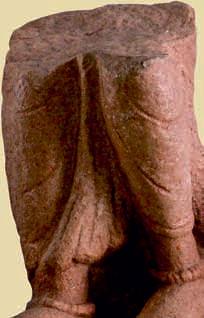

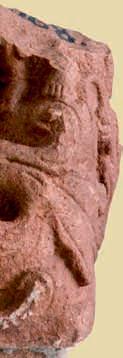

Rajputana Museum owes its rich collection to the generous contributions of antiquarian objects by the royalty, nobility and local chieftains. The region’s archaeological findings added on later, enhanced the collection further.
Stone sculptures and icons of Shaiva, Vaishnava and Jain traditions are among the most valuable treasures of this museum. Architectural fragments, stone inscriptions, excavated copper plates, coins and objects belonging to Harappan culture are also priceless antiquarian resources found here.
The historical Ajmer Fort, where the museum is housed, was constructed by Mughal Emperor Akbar (r. 1556–1605) in honour of Khwaja Moin-ud-Din Chisti, the famous Sufi saint. It was in this fort that Sir Thomas Roe presented his credentials to Emperor Jahangir (r. 1605–1628), marking the birth of British presence in India.
The British administration in early 20th century directed the establishment of a provincial museum of Rajputana. The planning fell upon Sir John Marshall, Director General of Archaeology in India, who prepared the necessary proposals for setting up a museum in Ajmer. Eventually, it was inaugurated by Sir Elliot Colvin, agent to the governor general in Rajputana, on 19 October 1908.
The efforts of many individuals resulted in putting together the collection. Most notable of these experts was Dr Gauri Shankar Hira Chand Ojha, the museum’s founder–curator, who continued in that capacity until 1936. He was a historian, linguist and scholar of Sanskrit, with a deep interest in Indology. He had also trained under Kaviraja Shyamlaldas, a renowned scholar and historian of Mewar region. Dr Ojha travelled extensively to collect artefacts for the museum and succeeded in collecting many precious objects. Sir Alexander Cunningham, A C L Carlleyle, Dr D R Bhandharkar and R D Banerjee—archaeologists at Archaeological Survey of India—also made significant contributions towards building the collection. Dr Ojha was succeeded by U C Bhattacharya, who remained the curator until 1961. He too surveyed the region extensively and collected objects of antiquarian interest.
Many prominent acquisitions augmented the museum’s collection: the Sunga–Kushana terracotta unearthed from excavations by Dr D R Bhandarkar during 1915–1916 at Nagari, the ancient Madhyamika city, in Chittaur region; the big hoard of Kshatrap coins discovered from Sarvania, ancient Banswara; the unique and rare inscribed stone slabs; and icons from the site Adhai-din-kaJhonpra in Ajmer. Specimens of textiles, arms and local crafts were added later.
After the integration of Ajmer-Merwara into the newly created state of Rajasthan in November 1956, the museum became a part of Department of Archaeology and Museums, Government of Rajasthan.
Page 32
Damaged sculpture, stone, Kota, 8th century AD, 29.8 cm, Acc No 1068
This remnant of an exquisitely carved sculpture was identified by archaeologist U C Bhattacharya as depicting God Varuna. However, the stance of the icon, its delicate feet with anklets, and folds of the garment, suggest it could represent Goddess Ganga, whose mount was a crocodile. It was excavated at Dara in Kota district.

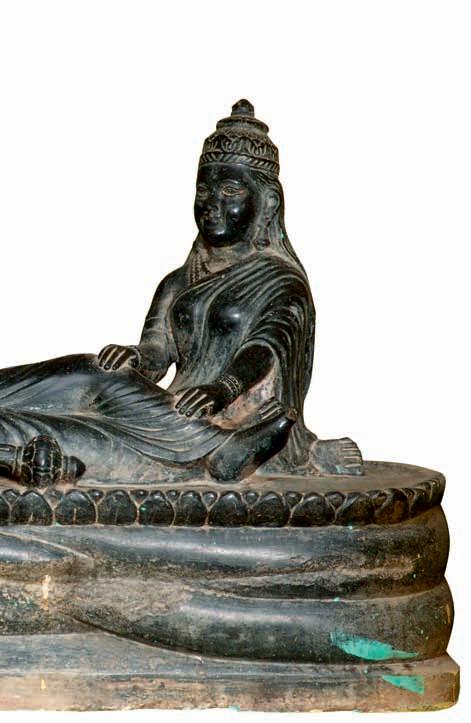

Narvaraha, black stone, Baghera, 11th–12th century, 50.8 x 31.8 cm, Acc No 358
It shows Lord Vishnu’s boar incarnation, Varaha. The pratyalidha posture—right leg firmly planted on Earth, and the left folded and placed on a lotus held by a snake couple—shows a divine and regal stance, complemented by the aureole and lotus canopy. Varaha is adorned with a garland of flowers, holding a conch, discus and a mace. A dagger is tucked at the waist. The Earth Goddess, whom Varaha rescued from the ocean, sits gracefully on the upper left hand, holding on to the fang of the boar.
Sheshashayi Vishnu, black stone, Kishangarh, 19th century, 90 cm, Acc No 1713
Lord Vishnu is shown stretching himself on the coils of the snake, Shesha, with Goddess Lakshmi at his feet. His four hands show his attributes, and the lotus springing out from his navel bears Lord Brahma, the Creator.
Lingodhbhava, red stone, Harshnatha in Sikar, 10th century AD, 111.8 x 48.3 cm, Acc No 374
An iconic representation of lingodhbhava story from Shiva Purana, this sculpture shows the attempts made by Vishnu and Brahma to discover the origin of Shiva and the linga form in which he is worshipped. Brahma looked for the top at the upper end, while Vishnu went downwards, looking for the base. Maladharini Gandharva figures are also present. This remarkable piece belonging to early-Chauhan period was acquired through the effort of archaeologist D R Bhandarkar in 1913. The linga is broken on the top.
Below
Jain pontiff, black stone, Baroda village, AD 1597, 22.8 x 26.6 cm, Acc No 426
This sculpture of a seated pontiff bears an inscription dated to AD 1597. It was found in Baroda village in south Rajasthan, and was acquired in 1915.


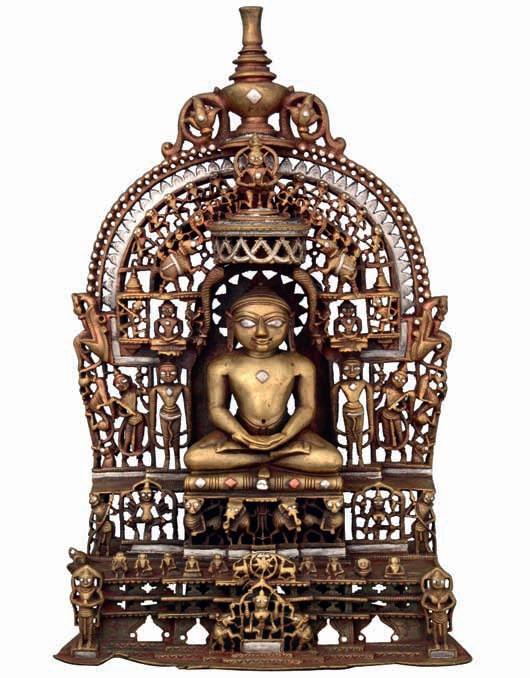

Monk on a pedestal, brass, Pushkar, 18th century, 23.8 cm, Acc No 535
The monk is an accompanying figure to the main deity in a temple in Pushkar He is shown standing with half-stretc hed arms, perhaps to car ry something for the deity His head is shaven, but a bun of hair remains on the top.
Left
Ajitnath, bronze, Pushkar, AD 1510, 33 x 21 cm, Acc No 1736
The icon is beautifully ornamented and executed The second tirthankara, fordmaker, Ajitnath is seated in padmasana, lotus pose, with five diminutive jina, acolyte figures, at the back Yaksha Mahabala and Yakshi Ajitabala are seen on lower corners of the pedestal

Blade, c hert, Mohenjodaro, 3000–2500 BC, 8.26 cm, Acc No 1562
The parallel-sided blade, prepared from a fluted core, is a diagnostic feature of Harappan cultures. It was used for cutting and c hopping. Blade-making tec hnique was evolved dur ing Upper Paleolithic per iod and continued up to the Chalcolithic per iod (3rd Millennium BC).
The blade was excavated in 1925 and acquired by the museum in 1940 Suc h long, parallelsided blades have been reported from all Harappan sites in the Indian sub-continent.
“...a welcome beginning for museum professionals in the country… ” Marg
JAWAHAR KALA KENDRA Museums of Rajasthan
Editedby Chandramani Singh
208 pages, 256 colour photographs and a map
8.3 x 10” (212 x 254 mm), pb & hc
ISBN: 978-81-89995-23-2 (pb)
ISBN: 978-81-89995-22-5(hc)
₹1500.00 | $30 | £19
2009 • World rights

